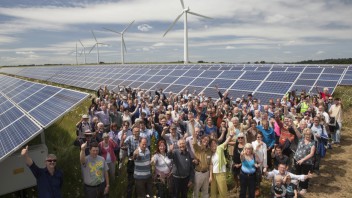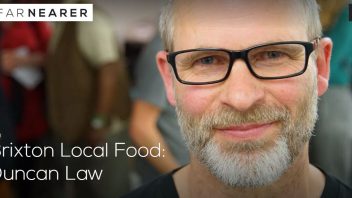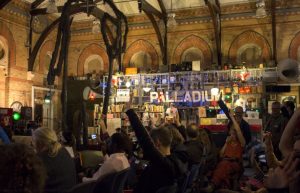Community involvement with solar farms: what it means for councillors, planners and community groups

Image: the largest community-owned solar farm in the UK at Westmill Solar Coop near Oxford, where 5000 local people own £16 million of solar PV. Here’s a follow on from our recent blog Scaling up Community energy: a how to guide. Originally written by Will Cortell over at Brighton Energy Cooperative.
Many places across the country are seeing solar farm developments. Interestingly, the Department of Energy and Climate Change (DECC) has also recently issued guidance that new renewable developments should have a degree of community ownership (see below).
What, therefore, might the appearance of these solar farm projects mean for planners, councillors and affected communities? Together with Community Energy South, we’ve worked up a guide as to how this might work in practice…
DECC advise community ownership
In February 2014, DECC issued the Community Energy Strategy which states: “we expect that by 2015 it will be the norm for communities to be offered the opportunity of some level of ownership of new, commercially developed onshore renewable projects. We will review progress in 2015 and if this is limited, we will consider requiring all developers to offer the opportunity of a shared ownership element to communities.”
This post addresses how community groups and developers can work together to fulfil DECC’s ambition.
Scenario 1 – a community fund
A familiar model of community-developer interaction is the establishment by the developer of a community fund – a portion of revenue which is then distributed into the community. With onshore wind projects, for example, best practice suggests £5,000 per MW installed is an appropriate amount. There have been suggestions that £6000 per MW could work for solar farms.
There are two considerations:
- A community fund is not in line with DECC’s ambition and the above quote suggests legislation may be forthcoming in 2015 to prevent this scenario.
- The benefit to the community is far smaller than actual ownership. For example, a 10MW solar farm is likely to deliver estimated revenues of £1,000,000 a year.
Scenario 2 – community buy-in
Once the solar farm is built, communities may have the opportunity to buy it. This would mean up to a 100% takeover of the asset. Community ownership could benefit the community in the following ways:
- Returns on community investments in solar farms can range from 8 – 10%
- Since the average investment in community energy projects is around £1500, financial returns are spread widely
- For the 10MW project mentioned above, circa £150,000 each year would be available for maintenance, community group admin, and accountancy – this would likely to be spent locally
- The community company would act with the interest of the local community. A local fund could be reinvested in local energy efficiency or generation of energy on community buildings, enhancing the local environment, well-being and safe guarding for the future.
Scenario 3 – partial community buy-in
Communities may buy part of a system once it is built. This scenario shares the characteristics of Scenario 2, but has added complexities. Community organisations are sometimes not allowed to enter into Joint Ventures below 51% control, and to qualify for financial incentives such as Enterprise Investment Scheme (EIS) they must buy an asset, not a portion of another organisation.
Can community groups finance such big schemes?
Managed considerately, community projects can build significant community funds that can shape the future of a resilient community and those that live in it. Indeed, there are plenty of examples of large-scale community energy schemes across the UK:
- In 2011 Westmill Solar Coop near Oxford bought a £16m solar farm with £6m equity and £10m debt
- Since 2010 Bath and West Community Energy have raised £2.7m equity and £750,000 debt for various solar projects
- Energy4All have developed 13 windpower cooperatives nationwide, most of which have raised over £1 million from local communities
- Brighton Energy Cooperative has raised £700,000 in 18 months for community-owned solar power – www.brightonenergy.org.uk
- Lewes-based OVESCO has similarly raised more than £500,000 for solar projects near the town over the last 3 years
A major attraction for community groups buying solar is the Enterprise Investment Scheme (EIS). This is a tax break for investors – 30% of their investment may be deducted from their tax bill. The addition of this 30% benefit adds to the returns generated by the project, meaning that community energy projects oten generate overall returns competitive with commercial projects.
How can planners facilitate community ownership?
To enable community-ownership of local renewable energy assets we suggest planners add a condition of planning to new solar farm developments which stipulates:
- The asset must be offered for sale to a community organisation within a year of development;
- That the price of that asset must be agreed with the local community organisation before planning conditions are met;
- That the the proportion of the asset to be sold has similarly been agreed.
DECC gives a variety of legal structures to define community energy organizations, including Community Benefit Societies, Co-operative Societies and Community Interest Companies.
It should be noted that for communities to attract EIS they must buy an asset – not a share in a company. As such for communities to effectively take ownership they must buy the entire asset outright or buy a physically separated system. If the system has not been physically separated at the outset then partial ownership may be difficult, both in terms of grid connection and qualification for EIS.
Implications for developers
Developers can make a profit via selling to the community by adding a margin to their project costs.
This does not mean the solar farm would become unviable for the community organisation: if a developer were to add, for example, a 10% profit margin on selling the asset, this would subtract circa 1% from the return on investment that the solar farm generates. So while a developer might make a 10% return on its (unsold) asset, the community could make 9%. Community ownership therefore offers developers the chance to make a profit on their investment while offering communities ownership of the assets within their locales.
Cuckmere, East Sussex: a pilot
In East Sussex, Cuckmere Community Solar (CCS) has been set up in partnership with a local solar developer looking to develop a solar farm with community participation. Planning consent was approved by Wealden Council in November 2013 and CCS is working with the developer and Community Energy South to develop a working model of Scenario 3 (above).
Community ownership will not only offer a good return for local share holders but also a considerable local community fund that can be reinvested in community energy efficiency, local amenity enhancements and the development of the natural environment.










Very Good Strategy by Govt to encourage local communities to come forward
and invest in these Solar Farm Development Projects
Solar Farm Developers